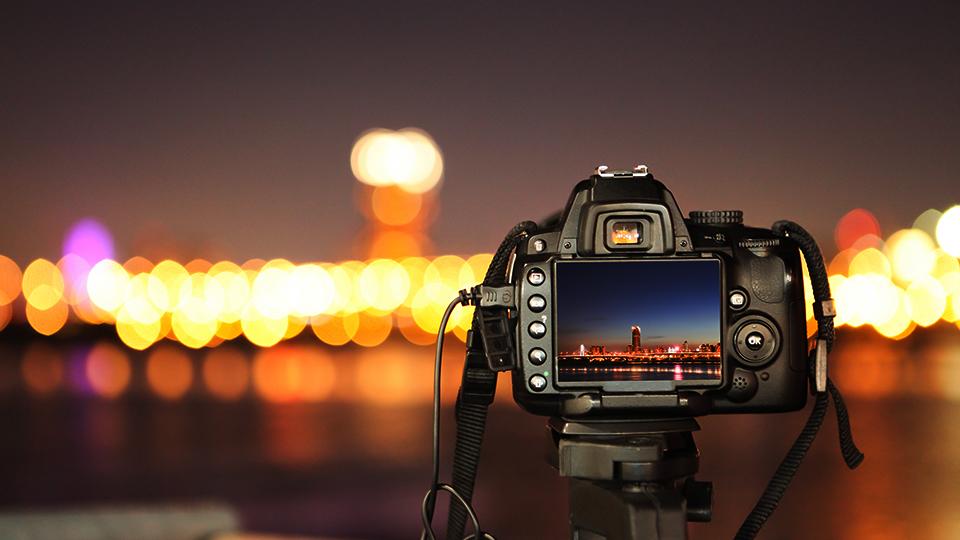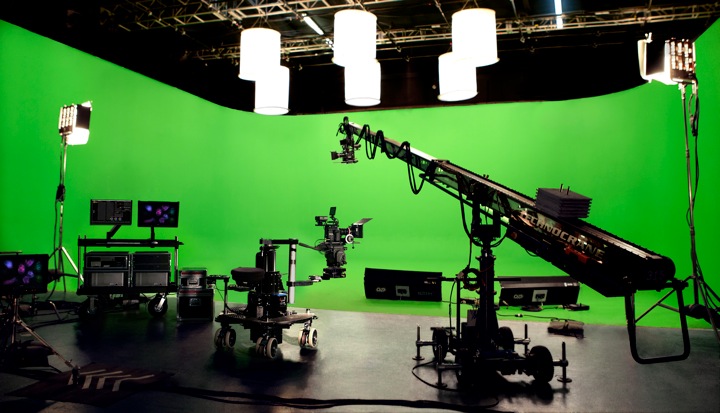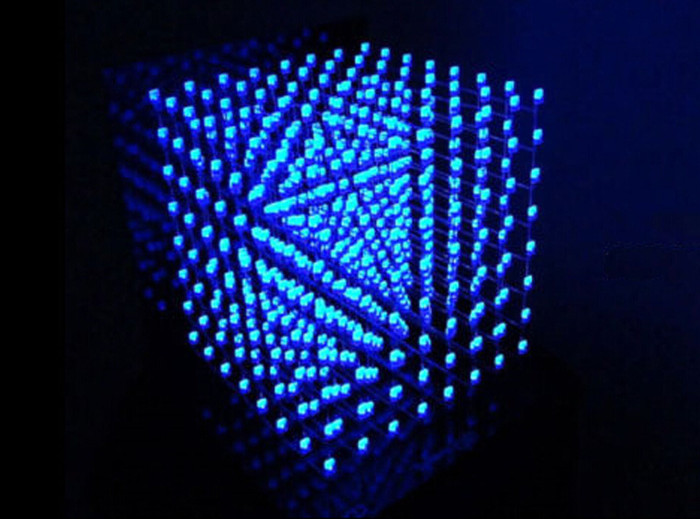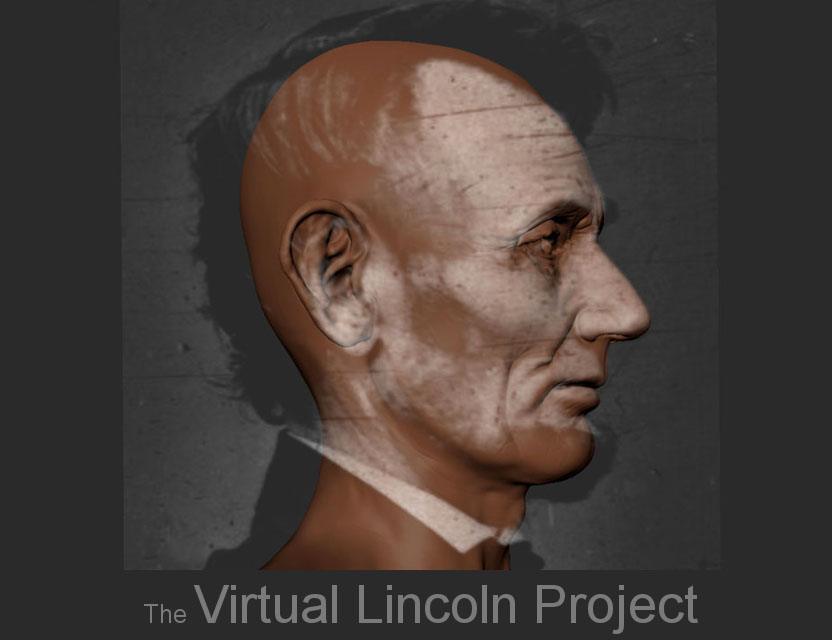Video Tutorials
Pre-Production Equipment Staging Theory Post-Production
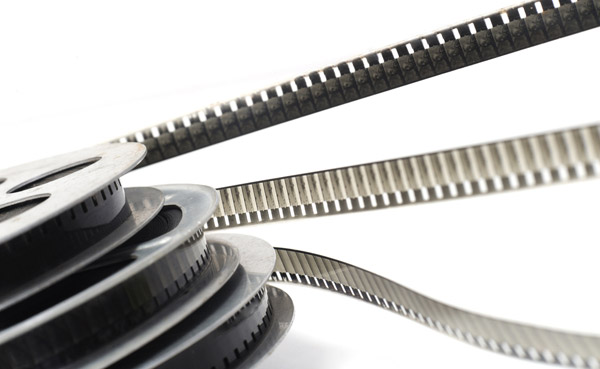
Digital vs. Film
Digital cameras have made indie filmmaking affordable and available to everyone. However, many film purists still prefer to shoot on analog film cameras. The only real advantage that film has over digital is that there is a nostalgic quality associated with the grainy film footage that digital supposedly lacks. If you're a cinemophile, you might be able to tell the difference between a video shot on film and one that was shot digitally, but to regular people they really look about the same. Film might be a better option if you prefer working with tactile stuff more than software.

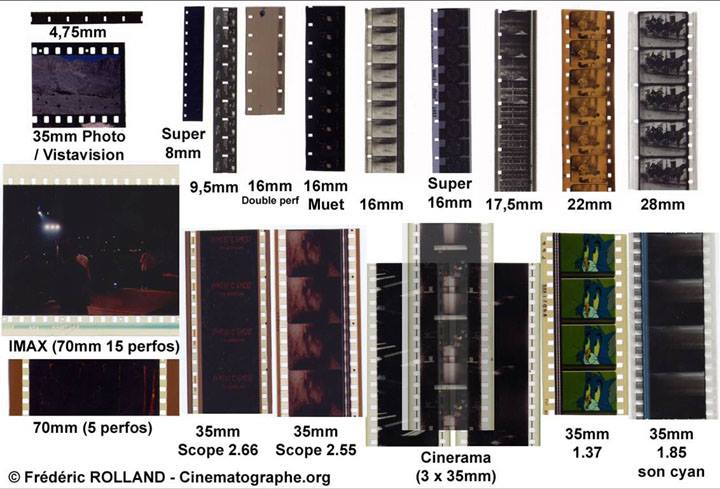
Working with Film
8 mm film is the standard film size. Super-8 film has the same 8 mm dimensions, but results in a slightly larger image due to smaller perforations with wider spacing. 16 mm and 35 mm are two other larger film types. 30 mm and 70 mm are used by Hollywood movie studios to capture the detailed images that will be shown on the big screen using movie theater projectors, but the majority of studios are transitioning entirely to digital. Film isn't completely dead though. It's possible to shoot on film and just scan the reel into a computer for editing without any adverse effects.
Some things to be aware of when working with film is that the equipment is expensive. Reels can be heavy and difficult to transport. A 3 inch reel only holds 50 feet of film, or about four minutes of footage. A 5 inch reel contains 200 feet, about 15 minutes. The process to develop film is slow, and involves chemicals that are not particularly environmetally friendly. Old cellulose nitrate films are highly flammable (modern film is made with safer polyester or acetate). Film stock scratches and fades. Editing everything by hand cutting, splicing, and taping isn't as glorious as some people say it is, and it's nowhere near as efficient as using software. Most old film projectors are being replaced by digital projectors. Film captures high quality images with exceptional levels of information, so it remains a good archival medium
What Is: Film | How Film Works and Its Place in Modern Filmmaking
RedShark: What is the road ahead for film archiving?

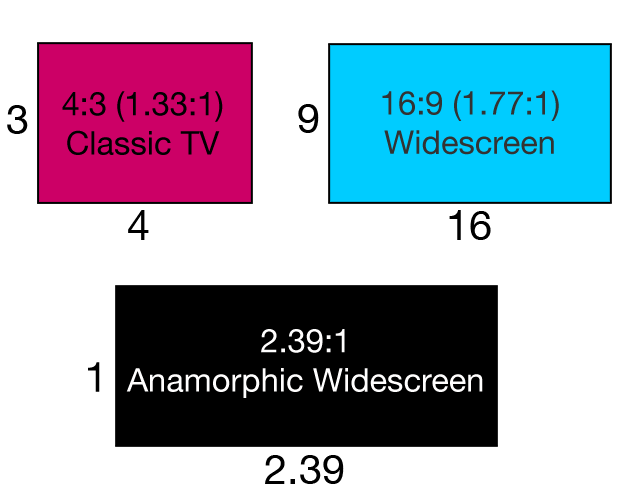
Aspect Ratio
Aspect ratio determines the dimensions of the video. 16.9 is the most used standard for HD. 4.3 is the old standard. A lot of televisions, monitors, and computer screens are manufactured to fairly large dimensions, so widescreen is the slightly more adaptable format. Widescreen creates black bars on screen, but this is preferable to some formats that can sometimes get compressed horizontally, causing the image to look squashed.
Now You See It: Aspect Ratio: Which Should You Choose?

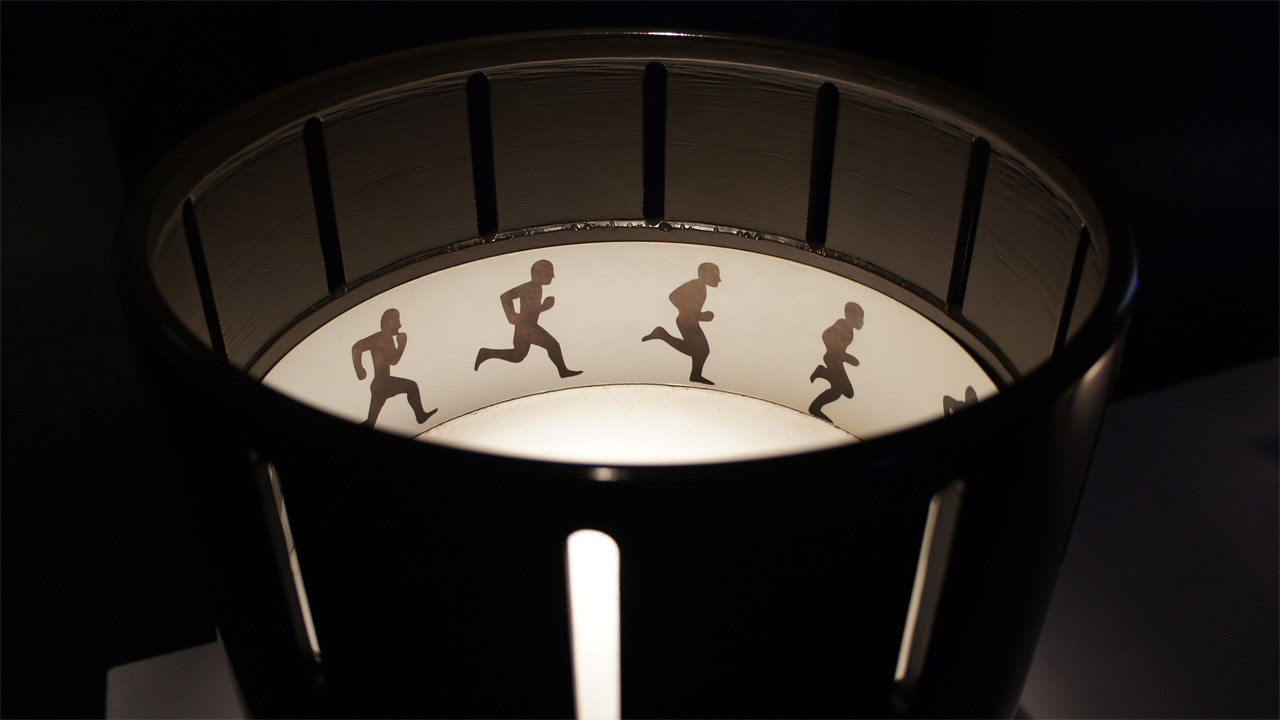
Frame Rate
24 Frames per second is the arbitrary standard for video, since it matches how fast the human eye can process visual information. Less than 24 frames per second will cause an undesireable flickering jitter effect as seen in flipbooks and old movies. Higher frame rates of 30, 48, or 60 FPS are possible for capturing extra detail, but should only be used when necessary since they just use memory without a noticeable difference in quality. High frame rates of 120-300 FPS are used for creating slow-motion effects.
Vsauce: What Is Video ??

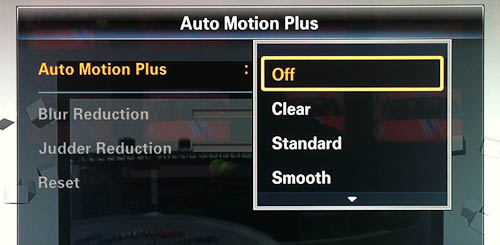
Motion Blur and Motion Smoothing
Broadcasting networks use different standard frame rates than Hollywood. These standards are based on the refresh rate of the projection equipment, namely HD monitors and television screens. American television networks use 29.97 FPS, but European broadcast television uses 25 FPS. YouTube and Vimeo also have slightly different codec.
These standards are not disimilar enough to cause any perceptable differences in viewing quality. However, the frame rate recording method can have an impact on motion blur. Motion blur is a visual effect that occurs naturally due to persistence of vision. Movie film integrates motion blur as a vital component to the Hollywood cinematic look that people have grown accustomed to. Digital technology and machines can't cycle through frames the same way a movie projector can, but they can reproduce motion blur artificially.
Television shows often have less action and more emphasis on dialogue, so superfluous motion blur is cut out using an automated process called motion interpolation. It basically adds extra frames between the existing ones. The resulting effect causes people and objects to stand out from the background in sharper contrast. Depending on the situation, the lack of motion blur can appear slightly artificial to the human eye. Motion blur can usually be easily turned on or off in the display settings.
Gizmodo: Why Frame Rate Matters
CNet: What is the 'Soap Opera Effect'?
Quora: Why do movies look smooth at 24 fps, but video games look terrible at 24 fps?

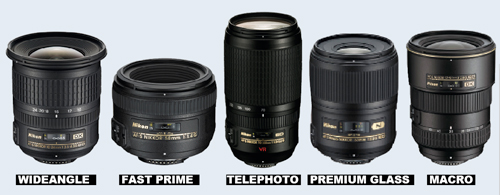
Camera Lenses
Most camera lenses are named after the focal length at which they work best. Different lenses can achieve different looks to your shots. 14mm is close to your average smartphone camera. 50mm is the standard for general shots. 85mm is usually said to be good for portraits. 85mm+ Telephoto lenses are used for far away shots where you want to zoom in really close. Telephoto zoom magnifies shots even more.
Fisheye lenses have high distotion around the edges like a convex mirror, and are used mainly for experimental effects. Wide angle lenses are generally used for panoramic or landscape shots.
Phillip McCordal: All about lenses for beginners
Missy Elliott - The Rain [Supa Dupa Fly]

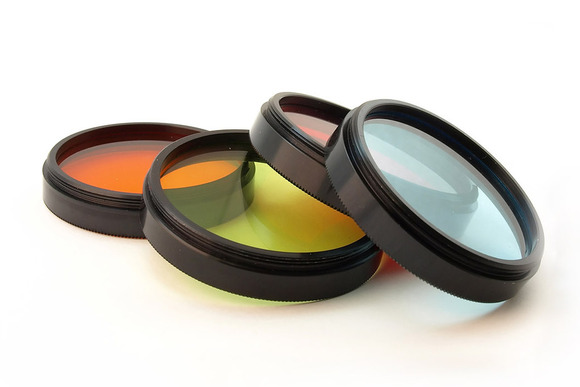
When to use lens filters
Filters can be fairly pricey for something you might not use all that frequently, but in certain cases they can really add some nice effects your shots if you know how to use them properly. The most common types of lens filters are UV, ND, Polarizer, Tilt shift, Hood, and various types of color gels. It's also possible to create your own homemade filters, but be careful not to touch the camera lens since the sensitive coating scratches easily.
D4Darious: Lens Filter Types
Polarizers

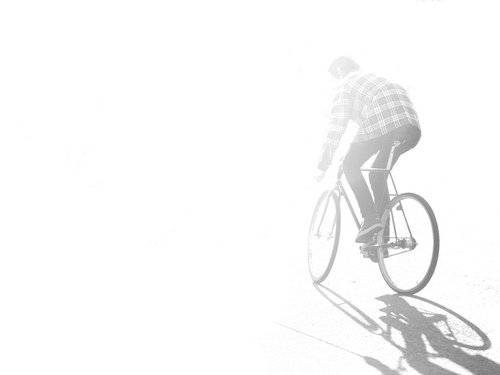
Over/Under-exposed footage
There are ways to adjust lighting contrast and audio in post, but that can be time consuming and doesn't always work. Getting the best quality footage the first time around is always the most efficient approach that will leave less work to do later. Always double check that your camera and recording equipment settings are where you want them to be. Staged scenes and lighting may be necessary. If possible, plan the location and what time of day you shoot. Make sure the battery is fully charged and take extra footage, preferably in relatively high resolution. Things can always be scaled down in post.
After Effects Color Finesse Color Correction

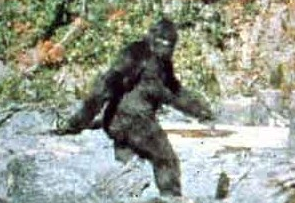
Blurry Footage or low resolution images
The camera was probably out of focus, or else the video dimensions weren't set at a high enough resolution. If sharpening the image quality and reducing noise in After Effects doesn't help, there's not much that can be done to salvage the footage other than reshooting. Unfortunately there isn't any way to magically make poor resolution appear higher quality.

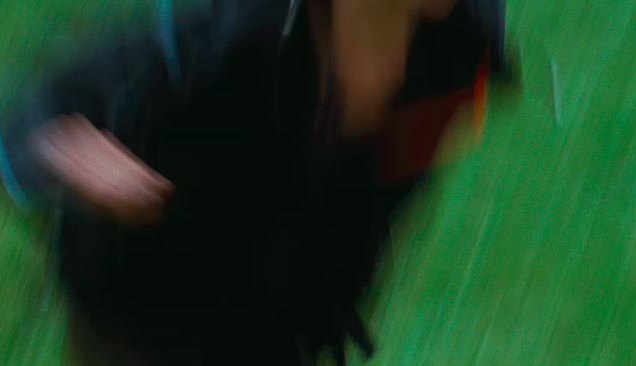
Shaky Camera
You could use the Motion Tracking correction filter in After Effects to reduce the amount of camera movement, but it is generally recommended to use a camera tripod. If a tripod won't work for your scene, there are DIY methods to steadying shots by using string, pvc pipes, or homemade dollys.
Alex Ray: Motion Tracking
ParrotBoy: After Effects Video Stabilization
Film Riot: DIY Dual Shoulder Mount
Film Riot: DIY Shoulder Mount
Indy Mogul: $15 handheld steadicam
This Does Not Compute: Overhead Camera Swing-Arm Mount for $9
Film Riot: DIY Camera Slider

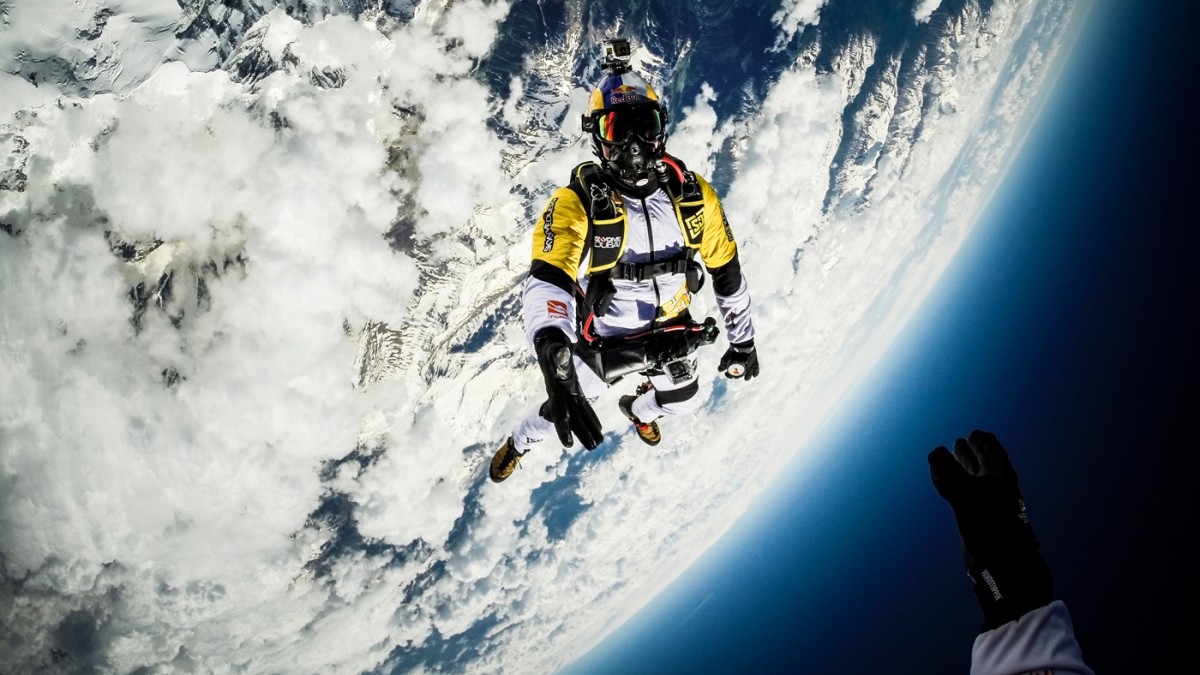
Video Cameras
Different cameras and lenses can produce very different moods in a video, depending on the context. It takes some practice to become familiar with the subtle effects different types of equipment will produce, but a good director can take advantage of technology quirks to create more interesting shots.
DSLR cameras are fairly versatile, but GoPro cameras are specially tailored for extreme POV action videos. They are built to be easy to carry around or clip on to equipment. The fisheye lens causes distortion, but captures a wider angle of view. This might not look very good in context of a general conversation scene between two characters, but maybe it would produce a cool effect for a chase sequence or a flashback.
Felix Baumgartner - Headcam footage space jump
Jake Coppinger: How to achieve a Film Look - DSLR film making

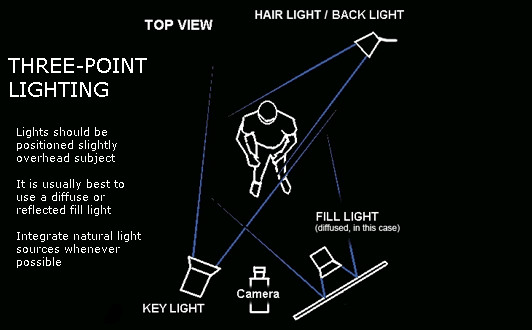
Lighting
Three-point lighting is the key to lighting most scenes. A regular lighting setup just fills a scene and is kind of generic and boring, but by adjusting the lighting levels and positioning it is possible to create more interesting and dramatic effects. Generally you don't want to have many lights in one scene. Be sure to think about other sources of light such as windows or light fixtures. You don't have to have expensive equipment to light a scene, but renting specialized lighting equipment is an option.
KriscoartProductions: CINEMATIC LIGHTING: 3 Point Lights
KriscoartProductions: CINEMATIC LIGHTING: Lighting with purpose and story in mind
Film Riot: Basic Cinematography Tips!
Ray Ortega: Video Lighting Demo - Mixing Color Temperatures

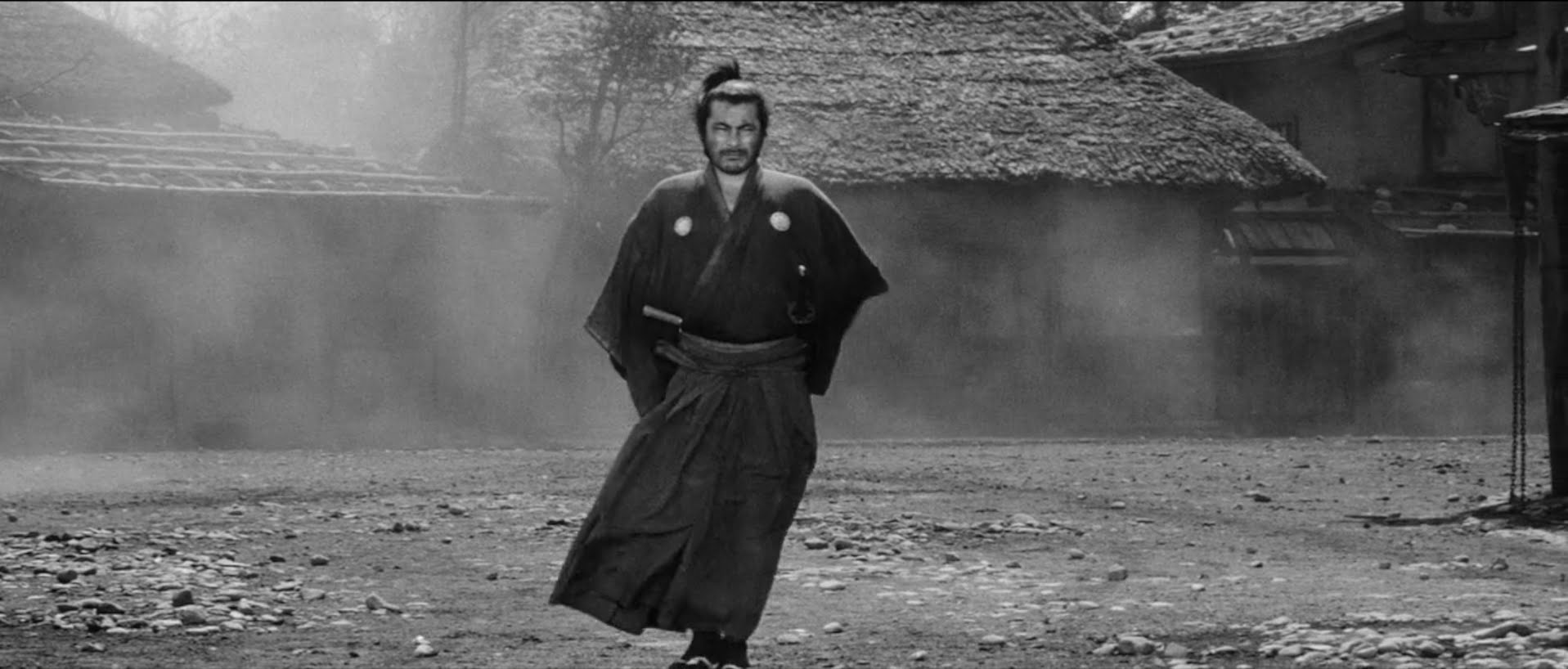
Camera Angles, Shots, and Movement
The frame of view of a camera can be broken down into a few basic types: Long shots, medium shots, and closeups. Long shots are generally used as establishing shots to introduce a new setting or characters. Medium shots are regular shots that focus in a little more on an action or subject. Over the shoulder shots are used when characters interact. Close up shots are used to show reactions or draw attention to important actions or subjects. Extreme closeups can be used for sharp juxtaposition.
Empire: Film Studies 101: The 30 Camera Shots Every Film Fan Needs To Know

Kuleshov Effect
The Kuleshov Effect is juxtaposition of two unrelated scenes that can stimulate different emotional responses from the audience. This technique works by forcing the audience to draw on their own interpretations to put the images into some sort of context. The director does not have to spell things out, since people can fill in the blanks of what is implied to be going on.
Battleship Potemkin: Odessa Steps Sequence
Vance Joy- 'Riptide'

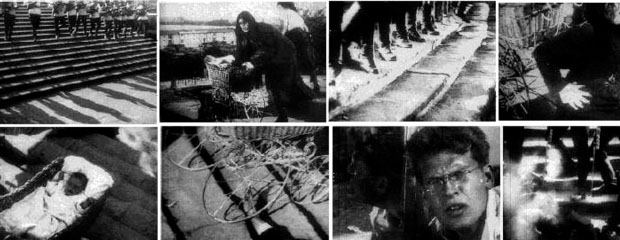
Montage
A montage is a series of quick transitions between scenes. The technique is frequently employed to convey a lot of information or show a passing of time.
Rocky Training Montage

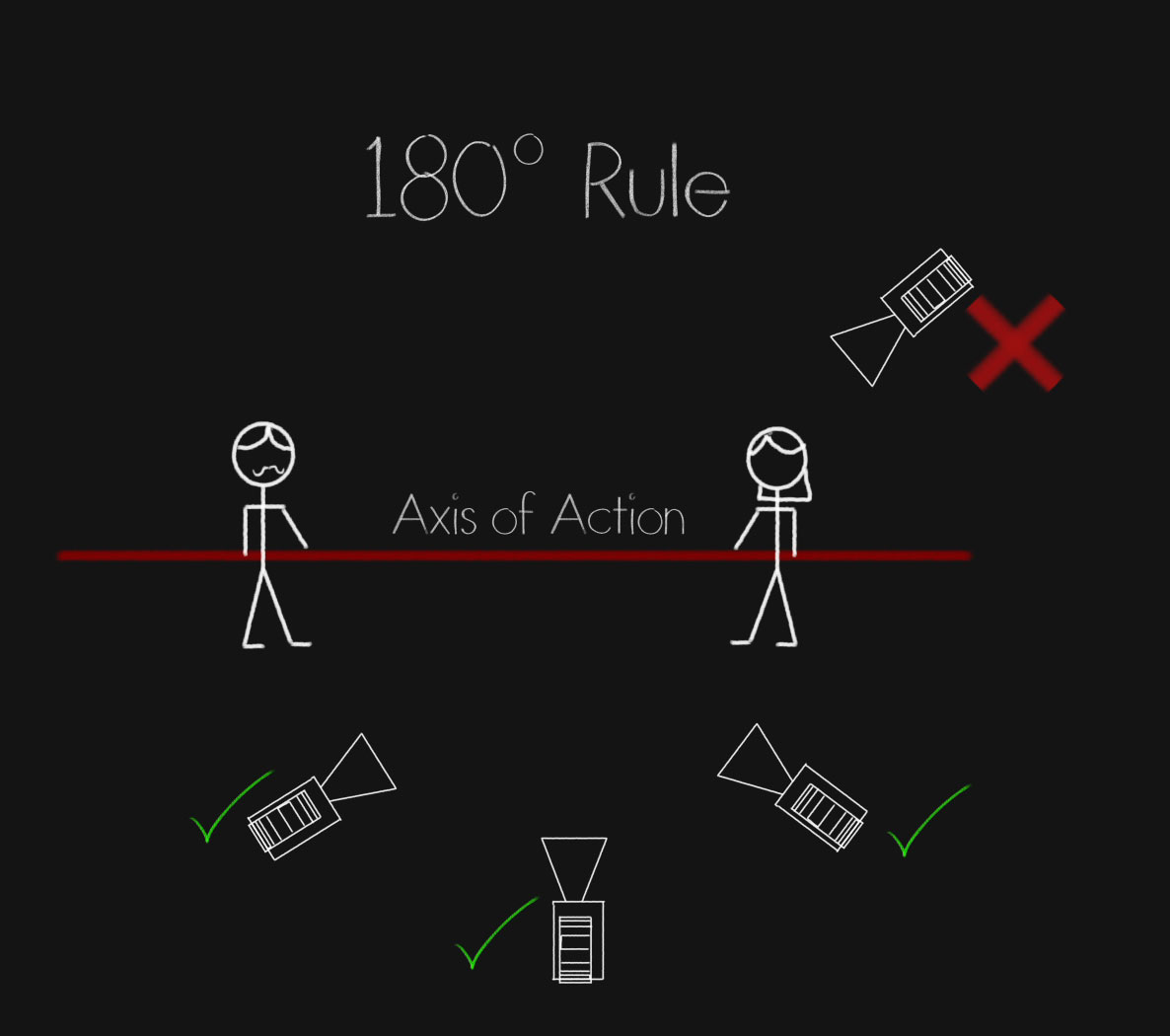
180 Degree Rule
The 180 degree rule states that a camera should not cross over an imaginary axis between two subjects. This ensures that any cuts made during editing will be coherent to the audience. However, actors might shift positions or move across a room, meaning the line will need to be adjusted.
Film Riot: Quick Tips Understanding the 180 Degree Rule

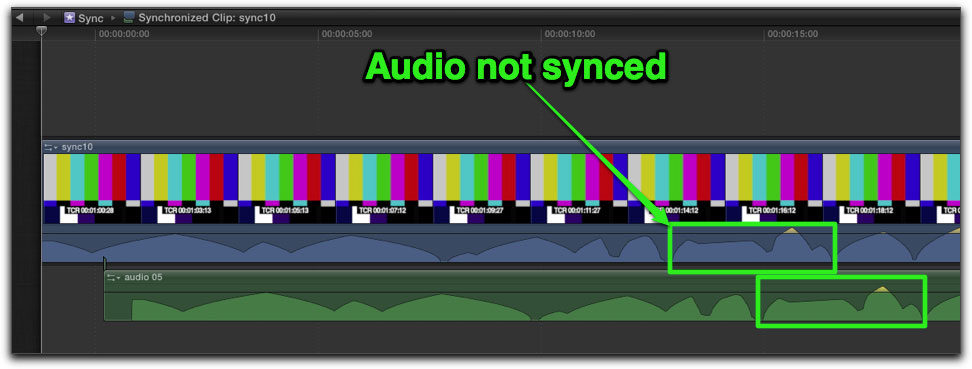
Audio Syncing
When adding audio tracks to video, it is generally recommended to always cut on the down beats of the music. For animation, creating exposure sheets will break down every sound or syllable so it is easier to time actions with the audio. Audio syncing can be a very time-consuming process. In the industry, ADR (Automated Dialogue Replacement) voice dubbing one of the most important post-production jobs
RocketJump Film School Pro Tip: How to Slate

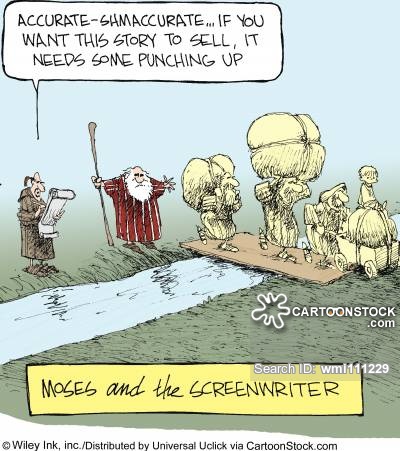
Screenwriting
The script is arguably the most important part of filmmaking, yet it often seems to get overlooked. There aren't any definitive rules or magic formulas for producing a good story. However, the best stories tend to not happen overnight. Spend time developing and refining an idea, editing it, and repeating that process 500 times until you get something you can be happy with. Follow a three act structure. For shorts, still follow a three act structure, but keep the plot simple. Get other people to read the script and give feedback. Hire an editor.
Writing styles vary based on the type of film medium you plan on using. A short film will tend to be the most flexible, relying more on editing and cinematic cuts than a lengthy script. Documentaries require a lot of narration. Television scripts have lots of dialogue, with different writers focusing on either standalone episodes or linear story arcs that may be extended over several seasons. A screenplay goes through several revision stages and has to be formatted a specific way so everyone involved in the production stays on the same page.
RocketJump Film School: Script Breakdown 101
Academy Originals: Creative Spark: Dustin Lance Black
Academy Originals: Creative Spark: Aline Brosh McKenna
Academy Originals: Creative Spark: David Magee
D4Darious: 8 Tips For Screenwriters

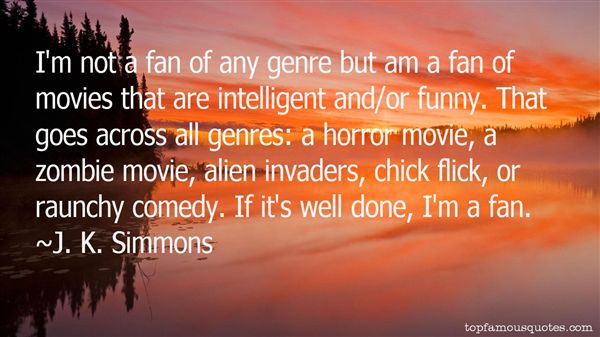
Genre
A lot of filmmakers blame CGI and mindless action movies for "ruining cinema," while other people see independent art house films as pretentious for trying to be more profound and thought-provoking than they really are. The reality is that genres are subjective to personal taste, but a truly great movie will transcend the genre if it is done well.
Genres are still important because they immediately convey an idea to the audience. If you say you are making a short about a dog getting lost and the owner has to find him, it doesn't really give a very good picture of what the short is really about. But if you say it is a comedy, or a serious drama, or that it is a WWII spy/thriller movie dealing with espionage, friendship, betrayal, and loss, that says a little bit more and gets people's attention. Having a clear genre or theme to your work will help define the purpose of what you are trying to achieve.
In general, it's better to do one aspect really well than to try out twenty themes and subplots that will only get convoluted. A science fiction action comedy drama romance revenge-thriller with time travel and rumination on the nature of whether people possess free will might be a bit too broad. Keep things simple

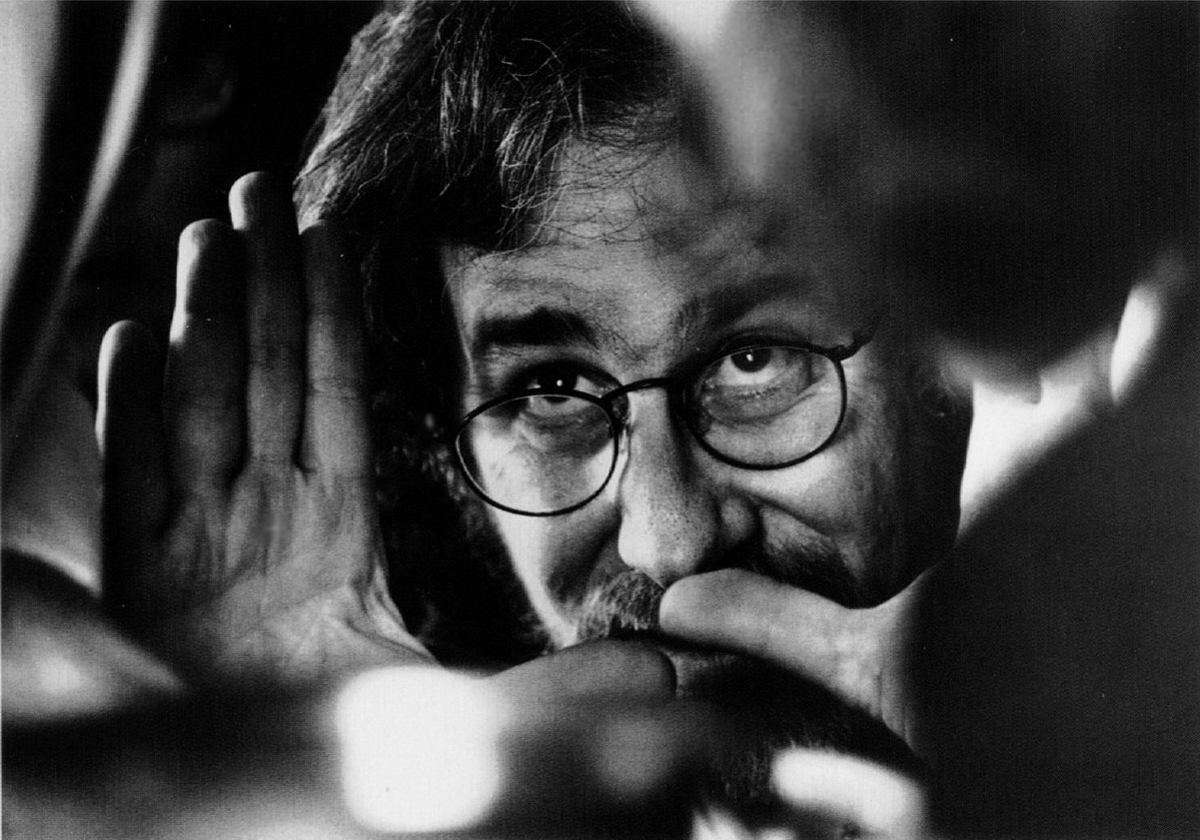
Composition- Framing and Staging
Framing is the heart and soul of cinematography. When used correctly, a camera shot can set the mood of a scene as effectively as the lighting or acting. Learn the various nuances of camera angles, camera movements, compositional elements, aspect ratios, lens types, score, color theory, and lighting. Watch movies to see how directors build scenes, and imitate their methods. Try to understand why the director or cinematographer chose to use a close up shot instead of a medium shot, or why the lighting is always so dark around one character but lighter around another.
Filmmaker IQ: How a Director Stages and Blocks a Scene
FilmSkills - How to Shoot a Scene Part I - Blocking

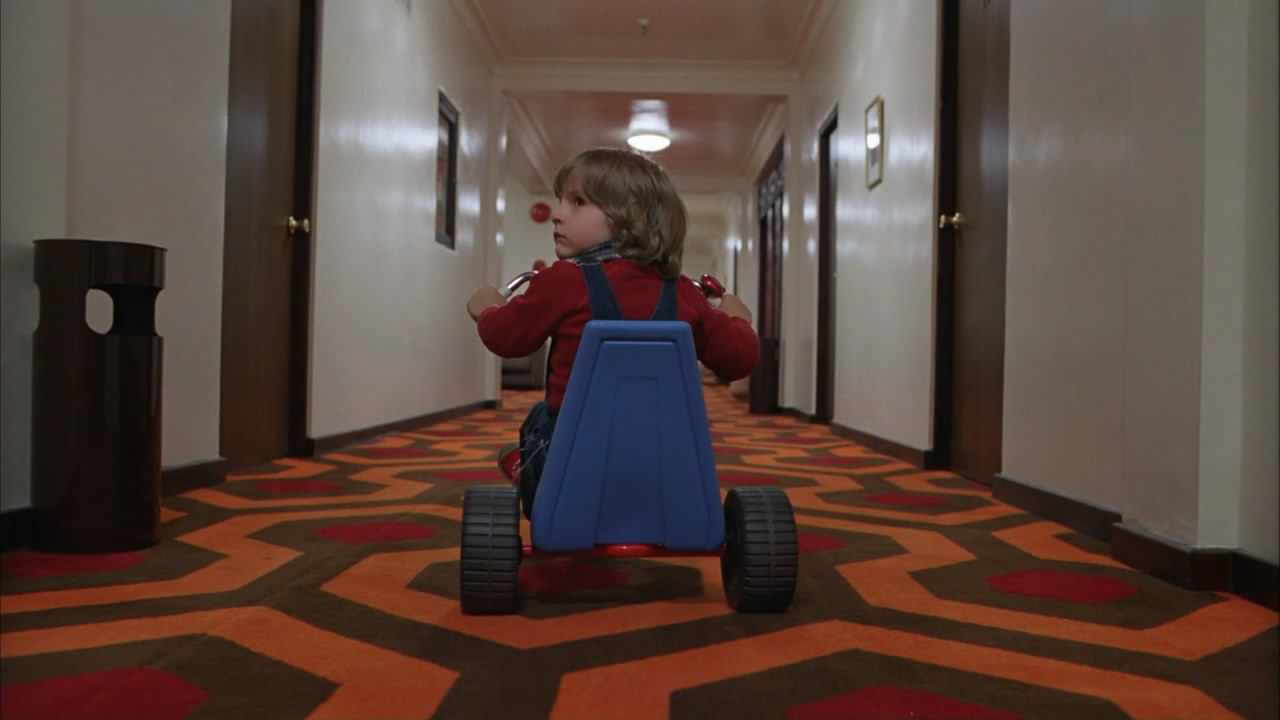
Mise-en-scène
Once you have mastered all of the technical aspects of camera equipment, you still have to make sure everything ends up coming together as it should. This is referred to in the industry as mise-en-scène, the overall way a shot feels, looks, and sounds. Some directors are able to make cinematic shots look easy, but this is only because they spend so much time planning and have devoloped an intuition for visualing scenes through years of practice. Having a really good Director of Photography and production team will also help improve overall quality standards.
Thorough analysis of the script and scene determines what kind of things should compose a shot to communicate an idea to the audience most effectively. Directors schedule for on-set blocking, multiple takes, and reshoots to get the exact look they want. Independent filmmakers don't always get the time to do this on a small budget and short shooting schedule, but knowledge of the script material and having a clear vision for what you want to achieve will start you off in the right direction.
Every director has different preferences and styles. Some are really good at writing and editing, others lighting or unorthodox camera movements. Be sure to bring something unique to your own approach.
Channel Criswell: Composition in Storytelling
Blender Guru: Understanding Composition

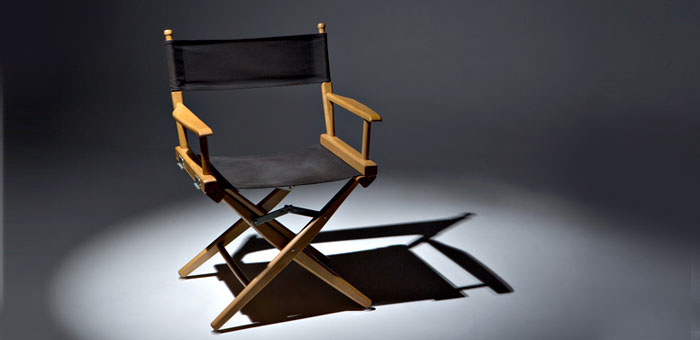
Directing
Directing is one of the most stressful jobs because so much responsibility falls on you. Directors do an insane amount of planning, preparing, and communicating with crew members. A lot of time is spent running back and forth checking in on the different departments to keep updated and informed at all times. If there is a problem, the director needs to find a way of resolving it quickly. Directors have to be prepared to tell their crew members to do things that they might not be happy about doing, and nag them constantly for updates and results. There's very little time to take a break and actually rest in the director's chair.
While all this is going on, the director has to maintain sharp focus on the overall finished product. It's really hard to keep ideas straight in your head when crew members constantly interrupt asking questions or bringing up new problems. Directors need to know when to compromise and take suggestions from others and when to stick to the original plan if they believe it will produce a better film. Clear communication of directions and ideas is crucial. There will be split decisions and hard choices to make at every point in the production, especially when things need to be cut. Director's shouldn't let personal pride or ego get in the way.
Productions are stressful, but directors especially have to not take out frustration on anyone else and encourage their teams to do their best work. Directors are expected to set an example by being involved (but not too involved in terms of interfering with other people's jobs). A director has to be able to trust the crew, and vice versa. A well-managed production is really a team effort, not a dictatorship.
D4Darious: Top 15 Mistakes Beginner Filmmakers Make
D4Darious: Low Budget Filmmaking Tips And Advice
Inverse: 5 Things Indie Filmmakers Need to Learn From Studios to Survive

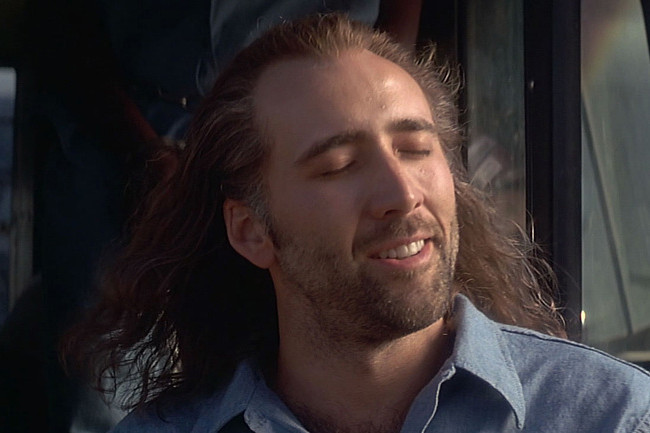
Casting
99 percent of live action narrative dramas center around human actors, so casting the right people for the main roles is kind of a big deal. Everyone has seen some movies with wooden acting and unconvincing performances, which is what you as a filmmaker want to avoid if you ever want your videos to be taken seriously at the professional level. Unfortunately, most first time directors don't have the luxury of getting to choose from a range of trained thespians, and hiring actors can be out of the budget range. You might be lucky if you can drag your biology-major roommate in front of the camera long enough to halfheartedly read a few lines before refusing to do any more.
Not having access to actors who are comfortable taking stage directions makes it somewhat difficult to produce a compelling video. Do the best with what you have to work with, and be sure to thank your volunteers for trying. Try to at least get the person to do a practice walkthrough and line reading before filming. Shooting everything in one pass is a recipe for disaster. Negative criticism brings down actor enthusiasm, so be positive with any suggestions or requests for scene reshoots, and keep in mind that the performance isn't going to be at the same level of an experienced method actor.
If possible, you can try and reach out to the drama department or local theatre groups. In general it's polite to give a little advance notice for audition times and provide a partial script. Good acting isn't something that can be done at the drop of a hat; it takes a lot of research, practice run-throughs, and mental preparation to really get in character. There needs to be serious conversation back and forth between the actor and director over the course of multiple takes to really bring out nuanced Oscar-quality performances. At UNCA, the project deadlines don't allow for a whole lot of preparation for casting calls, but if you go on to work on any kind of films in the future, finding talented actors is something that a lot of effort should be put into.
RocketJump Film School: How to Hold an Audition

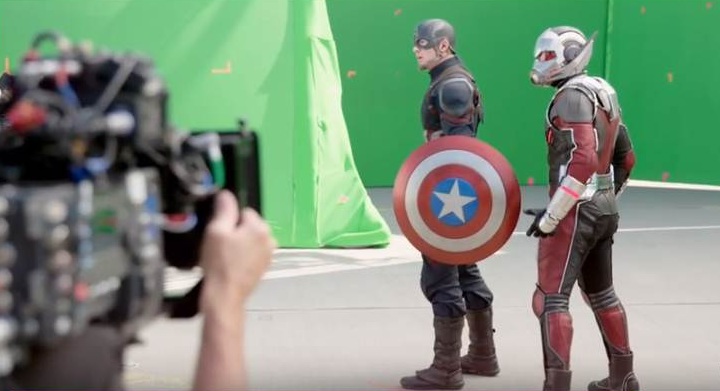
B-Roll and Stock Footage
B-Roll footage is secondary filler footage that can be interspersed between main shots. This can be used to cut away from an edit, or to add context to a scene. You can never have too much B-roll. A lot of this footage may never get used, but sometimes it can help with editing. If one scene isn't working, you might be able to swap it out with some backup footage. B-roll tends to work best when you set up multiple cameras viewing the subject from different angles.
Stock footage can also be interspersed between cuts. Just make sure it is licensed under creative commons and not copyrighted material. In general, it is best to stay far away from using any music that isn't yours in a video. There are sites that have free music and sound clips, but if you aren't sure it's better to be safe than sorry.
Video Creators: How To Legally Use Copyrighted Music, Games, and Movies on YouTube
IDA: Raiding the Lost Archives, Wisely and Legally: A Short Guide to Clearing Copyrighted Footage

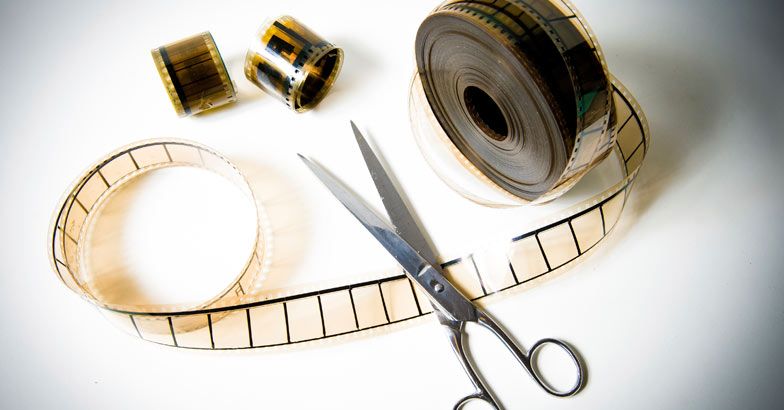
Editing- What should and shouldn't make the final cut?
Editing can make or break a great film. Never become so attached to one idea that you can't let it go and make an improved version. It is normal to film more content than you will end up using. While it hurts to let that all that work go to waste, just sacrifice it and move on. Get feedback on what works and what doesn't. Make videos as short as possible without compromising the coherence of the story.
Mental Floss: Film Editors
Every Frame a Painting: How Does an Editor Think and Feel?

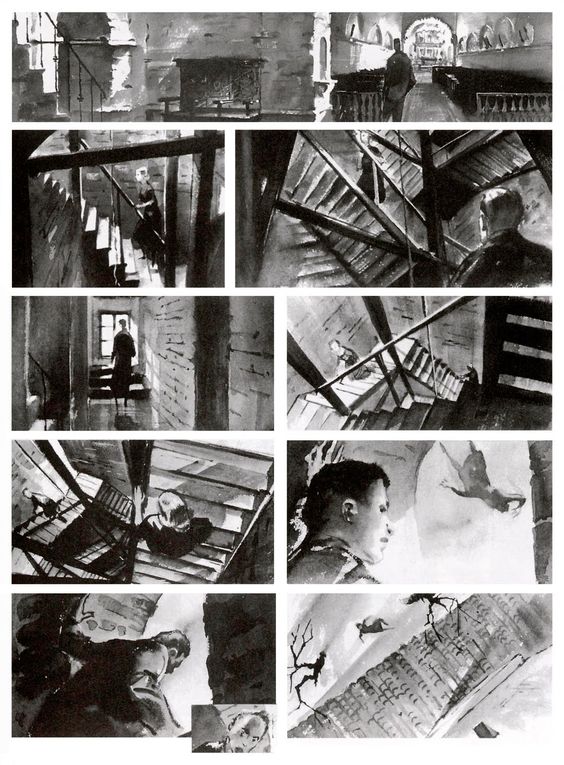
Editing- When to cut to the next scene?
ASL (Average Shot Length) indicates the average duration of a shot between cuts in a film. Action scenes tend to have lots of fast cuts, while long takes are preferred by actors since it allows their full performance to be seen without edits. Knowing when to cut is an intuitive process rather than an exact science, but if you break it down scene by scene it is kind of similar to knowing how many panels to include in a comic book. You want to move the story forward without unecessary exposition while still conveying drama and emotion to the audience.
RocketJump Film School: Cuts & Transitions 101
RocketJump Film School: Pro Tip: Editing to the Eyes
Channel Criswell: Breaking The Rules - The French New Wave
Nerdwriter: Casey Neistat- What you Don't See
CineFix: 12 Best Long Takes in Film History

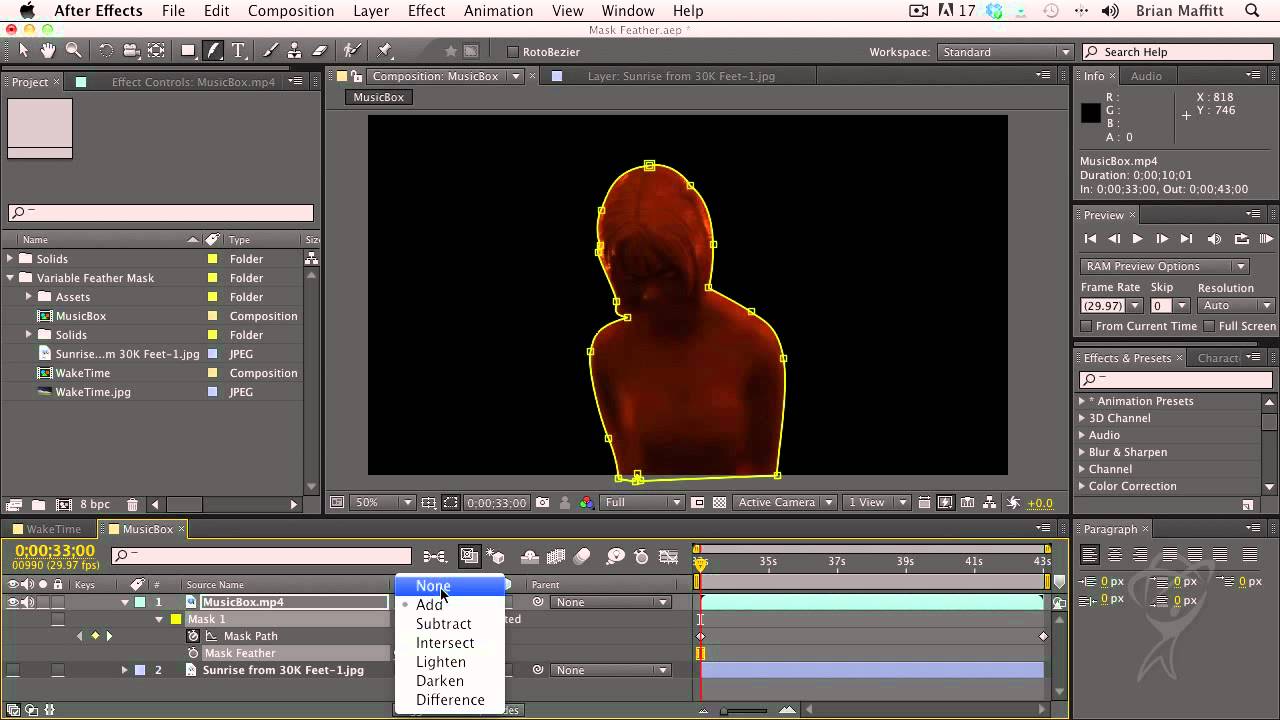
Masking
Masking is used to block out parts of a composition, usually backgrounds. This is particularly useful for compositing different scenes together. Masking work can be somewhat tedious when compositing lots of scenes and layers, but it is fairly standard in most types of professional productions.
Creative Cow: Creating & Using Masks in After Effects

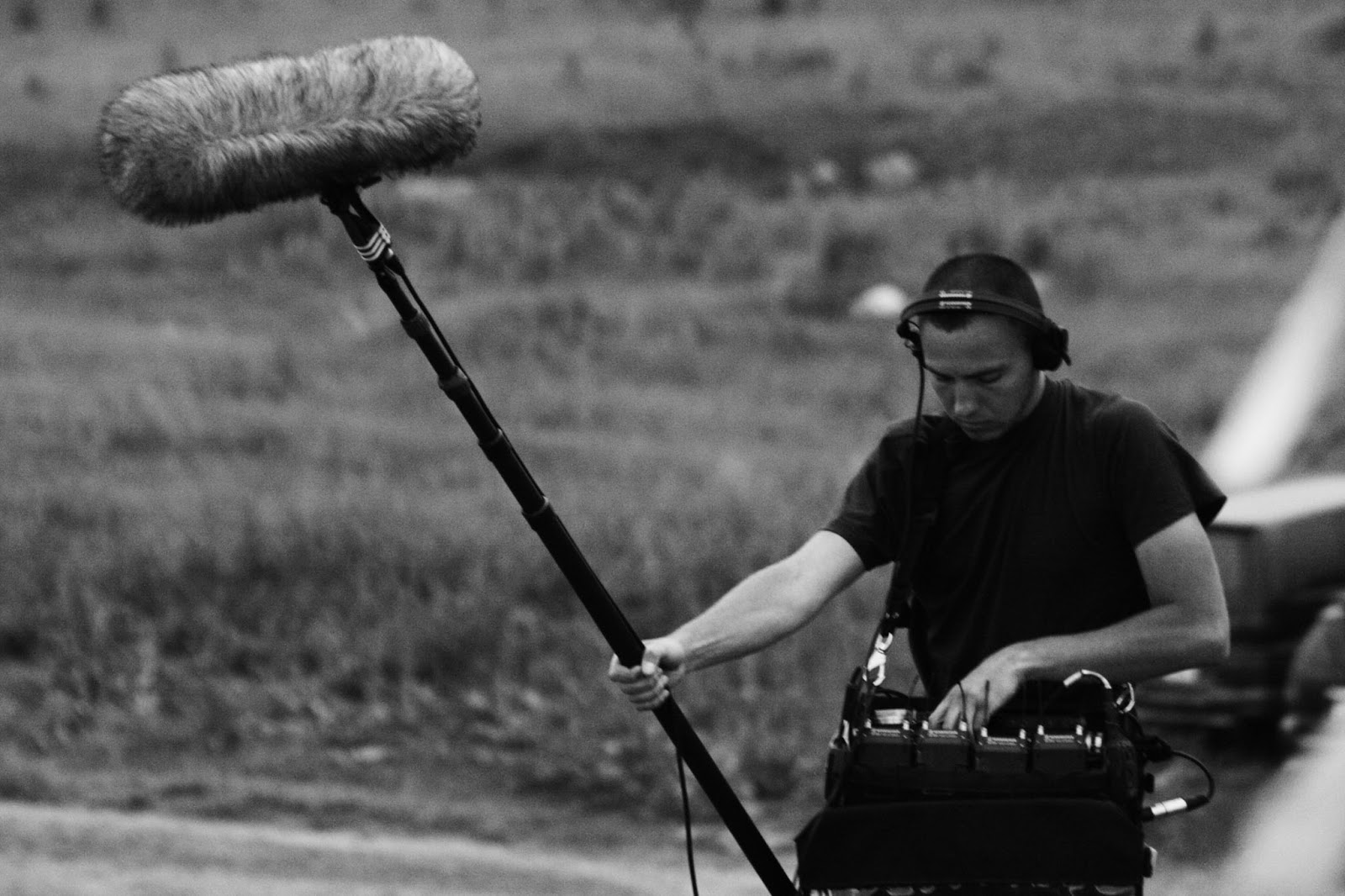
Audio Recording
Nothing is worse than opening up After Effects only to discover a mangled audio track that didn't record properly in that morning's shoot. If you were recording an interview or event, you might not have the option to redo the recording. So what should you do? Unless you are skilled at foley effects and lip reading, it probably isn't desirable to try and recreate a badly dubbed voice track.
If it is absolutely impossible to go back and reshoot, take what existing footage you have and improvise. You may have to completely change your original idea, going from a documentary piece about manatees to a choppy found footage horror video about terrifying lumpy sea creatures terrorizing a local town. All the interviewed eyewitnesses describe the creatures in Japanese and are translated using subtitles.
If monster manatees aren't your style, you might want to use the rented recording equipment to record something else and use that. Having to change your original idea is never fun, but next time you will be extra careful to double check that the fuzzy boom pole mic captured all the sounds you wanted.
RocketJump Film School Sound Gun Series Ep #1: PRODUCTION SOUND


LAV Mics
Lavalier mics are the little tiny microphones that are concealed on a person during a talk, performance, or interview. This makes it so the person can walk around freely without carrying a handheld microphone or having an entire sound crew hover around with boom mics in the background. The trick is getting the mic into a position where the mic will not get muffled or rub against cloth.
Most experienced actors are familiar with how mics work, but someone who has never used one before might need to be brought up to speed. The most common mic setup involves having the mic clip to the collar or under a lapel where it is hidden and out of view. The problem is that there is a wire that needs to run down under the clothing to attach to the power pack. There is right way and a wrong way to go about approaching someone and asking to attach a mic to them. The wrong way involves stating that you need to run a wire under their clothes and then getting super touchy-feely attempting to place the mic yourself. Don't do that unless asked or circumstances require it. Invading personal space and unwanted contact can be easily avoided by just explaining how the setup works and letting the person thread the wire themselves. You can then test to see if the mic is working properly or if it needs some slight adjustments. Everybody is happy, and awkward situations are avoided.
Videomaker: Hiding Microphones
Videomaker: Hiding a Lav Mic

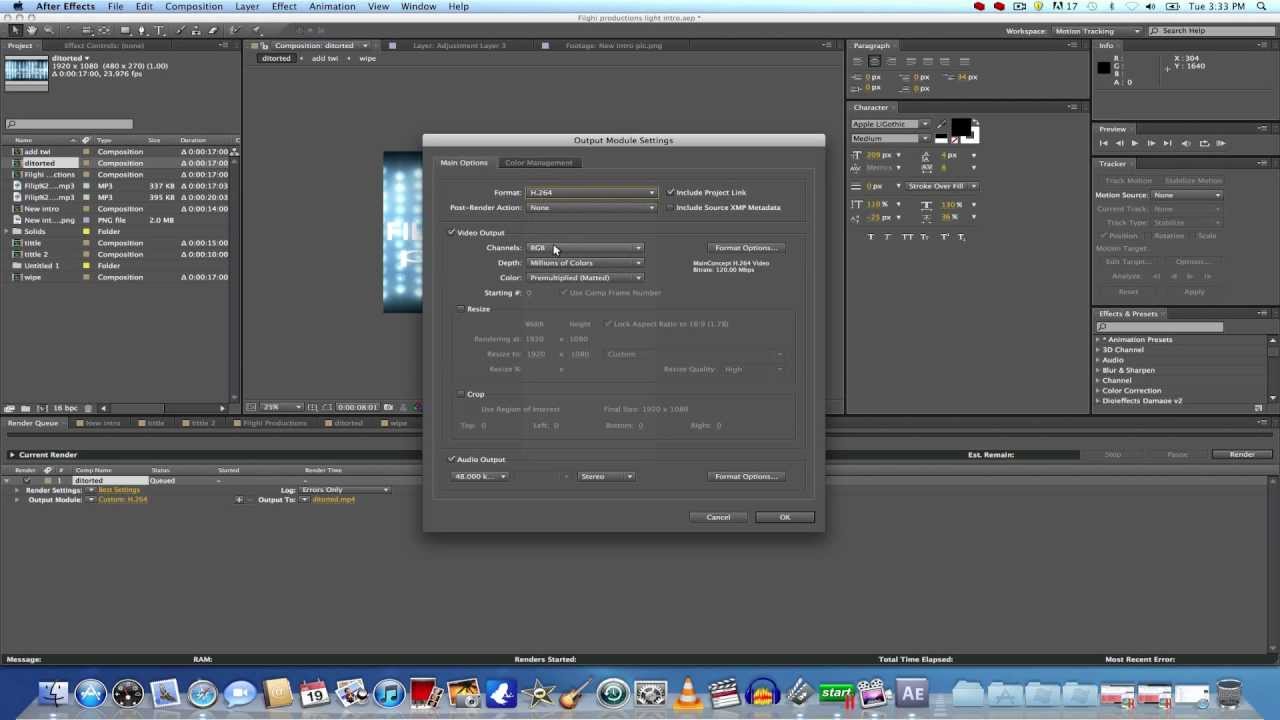
Exporting and Rendering
In New Media, you'll see a lot of grey export windows with a bunch of confusing setting options to choose from, most of which are completely superfluous and you'll never use. In general, after adding to your render queue, check that video settings are H.264, Quicktime(.MOV), with audio export turned on. HandBrake is a recommended free video compression tool if your video file ends up being larger than it should. HD format, uncompressed audio, and large dimensions are the usual culprits behind oversized files.
To format a video for YouTube or Vimeo, use the custom codec for those sites. There's an automatic export setting in After Effects and most othe video editing software. YouTube compresses videos to make the file size smaller, which may affect your video resolution.
BakersTuts: How To Render in After Effects (Composition, Work Area, and Audio)
FilmShortage: YouTube or Vimeo?

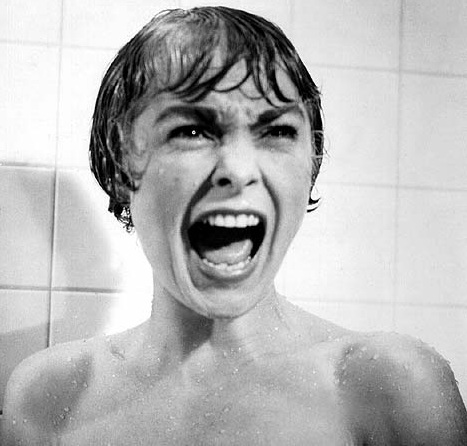
No audio in exported video
It's easy to forget to make sure the audio option box is checked on in the render queue. If audio levels are too high or low, you may need to adjust the levels.

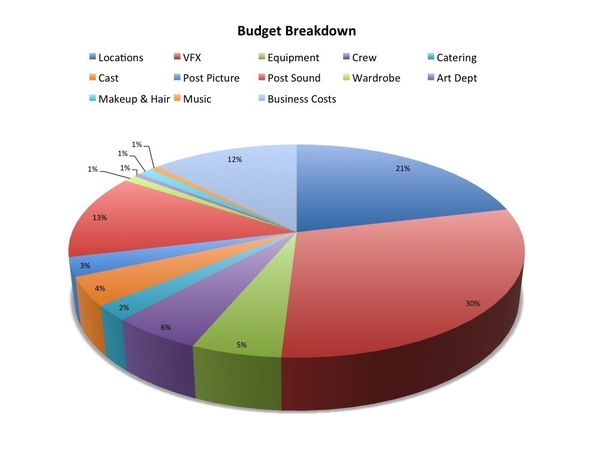
Budget
True filmmaking isn't about being competitive, having the best equipment, or making huge profits; all that matters is trying your best to make something interesting. You can make a high quality video working alone if you work hard and spend several months or years on a project. But money definitely helps make things easier and less stressful, and it lends some financial security so you can focus all your energy and time doing what you love. There's never a substitute for passion and creativity, but monetary investment is practically advisable to make the kind of feature films that will get noticed and lead to better career opportunities in the future.
Stretch your limited budget as far as it will go, and make videos and stuff because you enjoy it.
Film Riot: How to Plan a Movie Shoot! - Script Breakdowns, Schedules and Budgets
Academy Originals/Creative Spark: Ava DuVernay

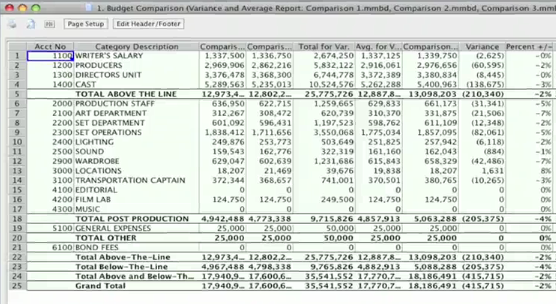
Fundraising
If you are serious about pursuing film professionally and have a really solid story idea that you've shown to some people and gotten positive feedback, you might want to plan out a projected expenditure spreadsheet. Crunching numbers in Excel isn't glamorous, but any prospective backer needs to see some kind of clear spending plan before they settle on a contract deal. Investment money can also be raised by working for it, taking out a loan, finding a wealthy sponsor, inheritance, advertising, or trying to start a kickstarter campaign. If you can't raise thousands of dollars, that's ok. Make do with what resources you have available.
Most low budget indie productions realistically fall anywhere in the $1,000-$35,000 range, possibly $50,000 or more if working on a movie pitch. A micro-budget film averages around $100,00-$250,000. Independently produced commercially viable movies conservatively cost a little over a million when all the distribution is taken into account. Those numbers probably sound impossibly high for a graduate when you're still struggling to pay off college loans, but there are a surprising amount of investors out there willing to sponsor talented independent filmmakers. The more professional experience you can get, the more likely you are to get backing.
Premium Beat: How To Best Approach Your Indie Film Budget
Indie Wire: 10 Tips for Successfully Producing a Micro-Budget ($200,000) Feature
LA Times: With indie films such as 'Brooklyn' and 'Room,' the creativity often begins with the financing
Above the line: Film Budgeting

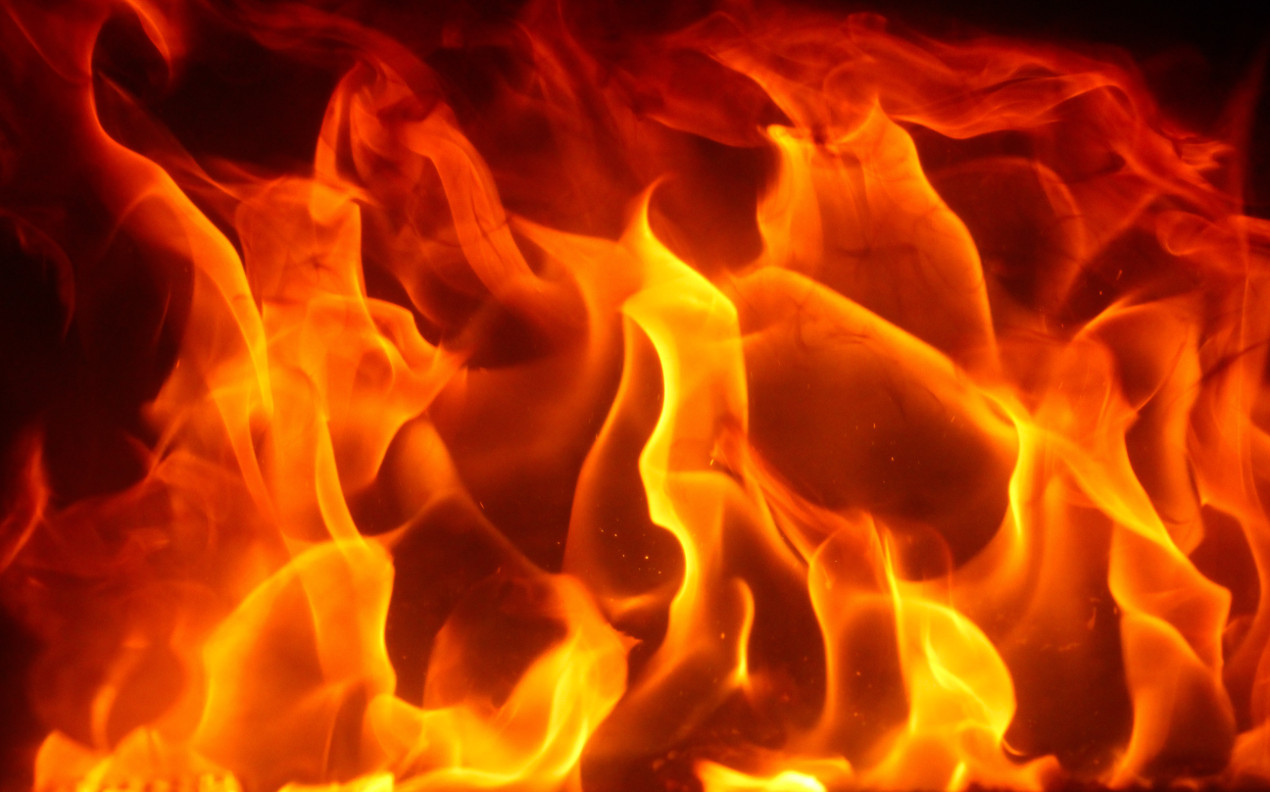
Development Hell
There is a long and very complicated series of steps prospective candidates must go through to pitch an idea to a network or studio. By the end of the process, the failure rate for televison is a daunting 98%, and the rest of the entertainment industry doesn't fare much better.
Development Hell is the industry term for the notorious behind the scenes bureaucracy that determines whether a movie, game, or tv series gets made. Ideas that have made it past the initial pitch stage, but haven't been produced as a pilot or entered pre-production are the usual victims of corporate inaction. The process of waiting for project approval can be prolonged for years before eventually getting shuttered completely. Usually the holdup boils down to disputes over costs, script, or the director, as well as a nightmarish amount of preplanning and market predictions. It doesn't matter who you are or how great your idea is, if studio excutives see no incentive in producing your project, there's not much that can be done.
There is growing resistance against the elite studios that have traditionally had a monopoly over distribution outlets. With so many inane regulations making it nearly impossible for average people to break into the industry, many are starting to turn to the alternative outlets of independent film festivals and online streaming.
IndieWire: 5 Things to Keep in Mind When Making an Independent Pilot, From the Founder of the New York Television Festival
Priceonomics: The Economics of a Hit TV Show
Imgur: Executive Revision Recomendations to Steven Spielberg's Back to the Future
io9/Gizmodo: The Whole Crazy Process Of Creating A TV Show, From Pitch To Pilot

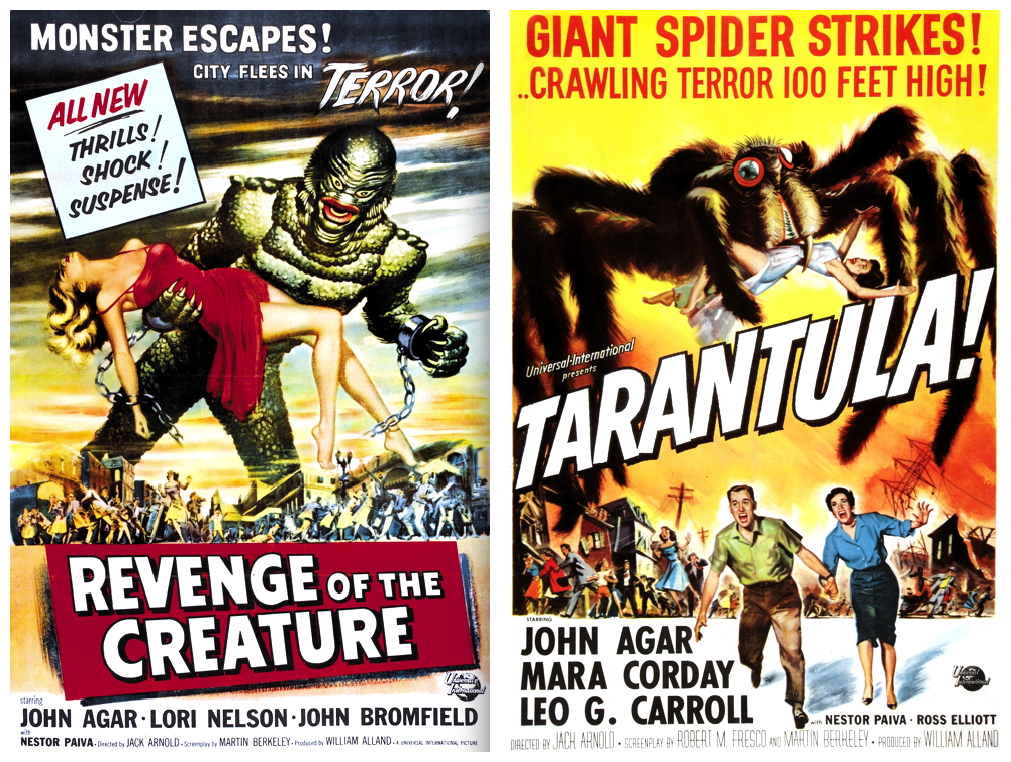
Promotion
Advertising spending in Hollywood has gotten somewhat out of control, as big studios will spend millions on promotional campaigns in order to build hype for a movie. Movie trailers, posters, commercial spots, billboards, product packaging, and teaser interviews all cost a lot of money and resources that independent filmmakers working on a shoestring budget can't hope to compete with. So how do you get recognition?
Social media, websites, word of mouth, kickstarter campaigns, film festivals, sensational posters: there are a ton of options. Just brace yourself for the tough struggle ahead, because trying to promote an independent film or experimental art video without major festival awards is challenging. The best advice is to try to meet other independent filmmakers and artists who will help you out and share connections.
The most important thing you can do is to get other people to watch your video, even if they are all just friends, family, or a few people online. Build up hype for your work using the same strategies the big studios use. The trailer, poster, or thumbnail image/title/description should grab attention and make your video look like the most awesome thing people will ever see in their lives. Try to reach out to a wide audience online. Mediocre YouTube videos and B-movies made on low budgets form a vast sea of online content, and your work will need to have high production values and branding to stay afloat. Many artists work for years without obtaining recognition, but it is possible to slowly build up a large subscriber list. Be different, interesting, engaging. And just keep trying no matter what.
D4Darious: The Truth about Filmmaking
Indy Mogul: Tips for getting recognition for short films

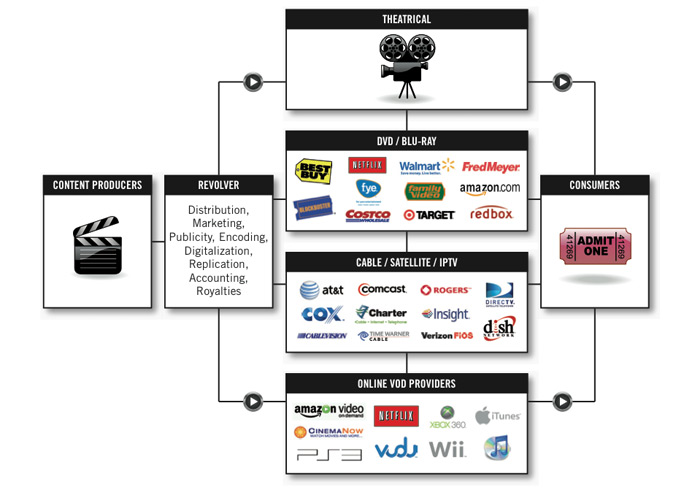
Distribution
Once your video or feature length movie starts to get some attention, you need to find a way to market your fame. To do this, you might need some financial backers, along with a venue. Online distribution is the cheapest and most accessible route, but it also doesn't provide nearly as much revenue. It's much better to go with some form of licensing deal with an established distributor. These companies will detract a percentage cut from the earnings, but you'll establish greater credibility as a professional movie maker or video artist rather than just being another amateur who makes YouTube videos as a hobby.
WikiHow: How to Burn a DVD
Nat & Lo: What Does YouTube Do To Your Video After You Upload It?

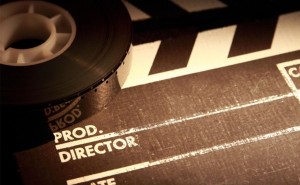
Advanced Tutorials- Hopefully Coming Soon
Video
Location Scouting
Scheduling
Compilation
Documentary Interview Questions
Chiaroscuro
Titles and Credits
Bechdel Test
Effects and Presets
Lighting Equipment
Removing film grain
Inverse Square Law
Diegetic sound
Director of Photography
Third Cinema
ADR

